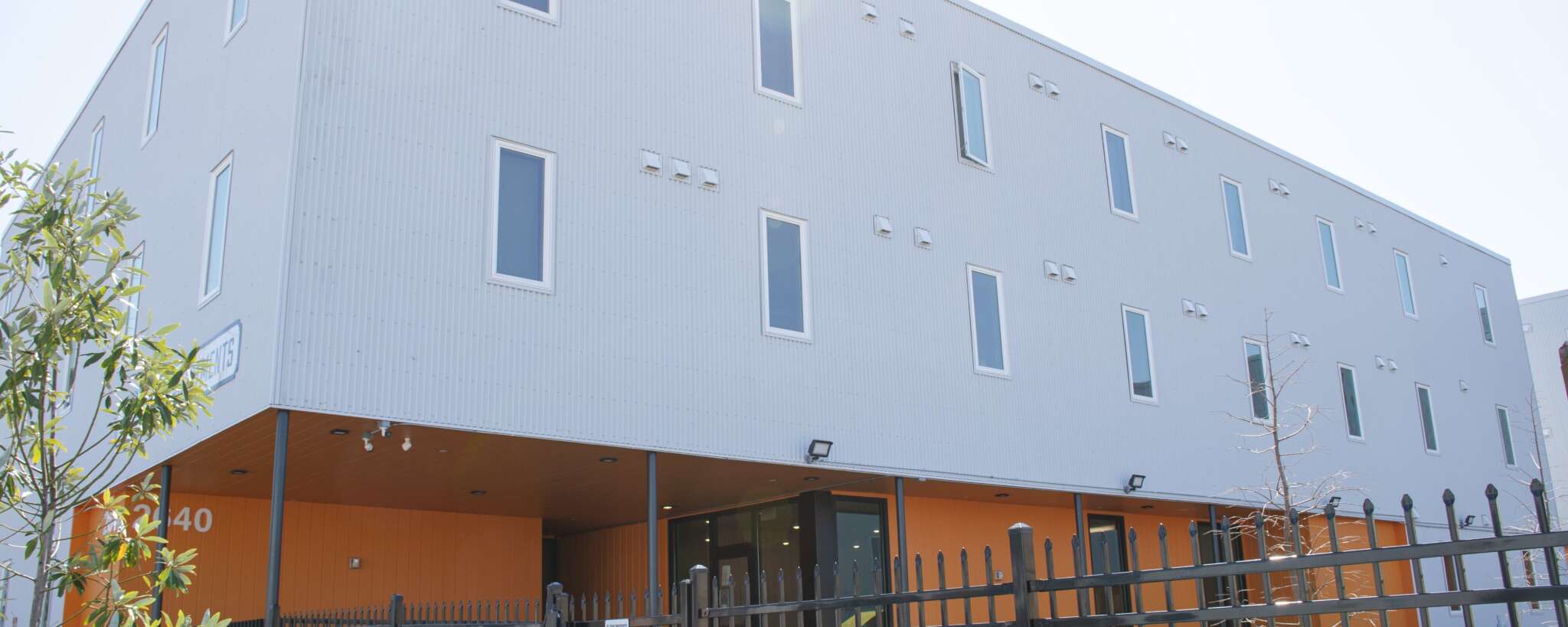As the residents of Louisiana struggled through lengthy periods without power in the aftermath of Hurricane Ida, one sustainably constructed New Orleans apartment complex has been able to keep the lights on. A bright oasis amid a cityscape left barren by a failed state power grid, the St. Peter Apartments building was able to keep its units up and running – mainly because of an innovative solar-hybrid energy mix.
The apartment complex is owned by the SBP nonprofit and is outfitted with 450 solar panels on the roof, which transmit energy to a large battery in a parking lot nearby. A building with this kind of setup has a hefty price tag – the entire project came at an estimated $7.4 million, which certainly couldn’t have been helped with the additional costs of constructing a small solar infrastructure. What helps lessen that burden, however, is the fact that the complex is the first in Louisiana to attain net-zero status, meaning that its total energy consumption is equivalent to the amount of energy generated on-site through renewable sources.
While the solar grid is the crown jewel of the complex, it is just one ingredient in a host of thoughtful design decisions that make St. Peter so resilient in storm conditions. The appliances and HVAC system in each unit are designed for peak energy efficiency, as are the central lighting controls. The solar array, built in collaboration between SBP and local energy provider Entergy, comes with a battery that can store enough power to operate the building for a year. Further design decisions to boost resiliency include things like a large stormwater storage tank and permeable pavement in the surrounding lot to reduce flooding. Finally, the lot is dotted with bioswales, which are man-made depressions in the ground that are then filled with soil and various plants in order to capture as much runoff as possible.
This kind of construction is what had helped St. Peter’s residents remain on an even keel during the tropical storm season, at times when neighbors had their lives interrupted by the lack of power. In October of 2020, while Hurricane Zeta ravaged the central power grid and caused an outage that lasted days, tenants of the SBP were not inconvenienced with loss of power, “when the power went out, I don’t think a lot of residents even realize that the city power grid went down,” said Lauren Avioli, director of housing development at SBP. “The building switched over [to solar].” A few months later, when winter storm Uri did similar damage to the area, these tenants were again able to live their lives close to normal, despite city-wide power outages.
Where the complex was crafted with environmentally ethical construction in mind, the minds at SBP wanted to continue that mindset when considering tenant composition as well. The building is categorized as having a mixed-income resident body, in large part due to the fact that 50 percent of units are prioritized for veterans in need of housing. Of these veterans, many are in the midst of the transition from homeless shelters or other recovery centers, and many are single mothers. On top of this, the solar rooftop infrastructure brings energy savings that are directly passed down to the tenants themselves rather than the pockets of the owners. “By [using solar panels], we’re not pulling all of our power off the city grid,” says Avioli. “We’re not charging the tenants for all the kilowatts that they’re using because what’s coming from the solar panels is free.”





